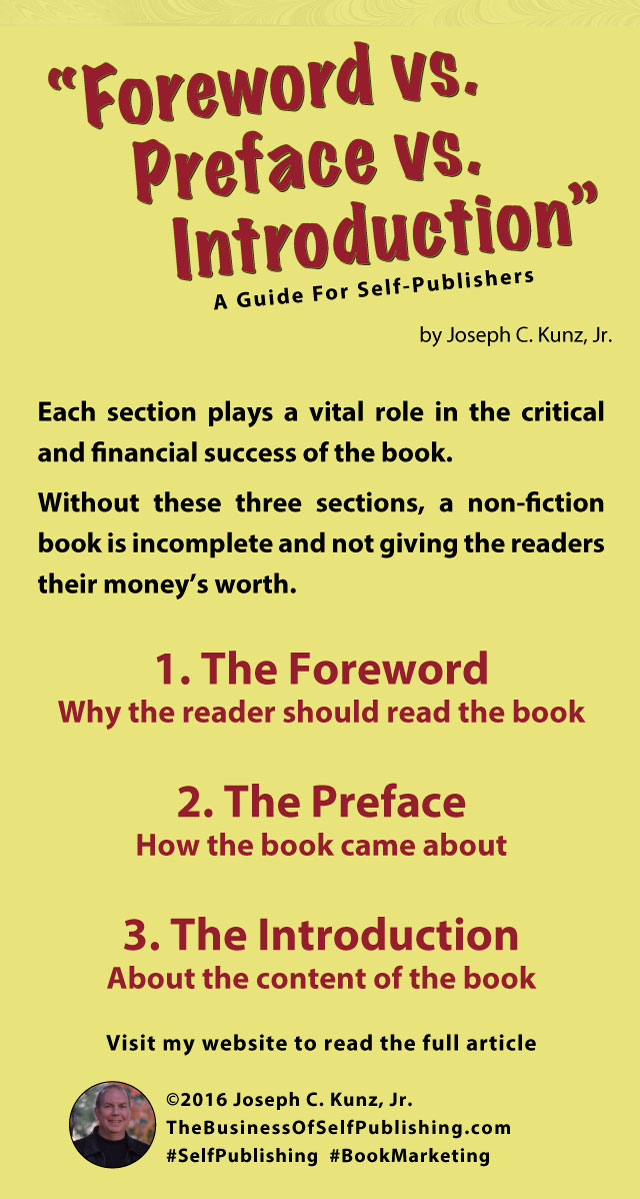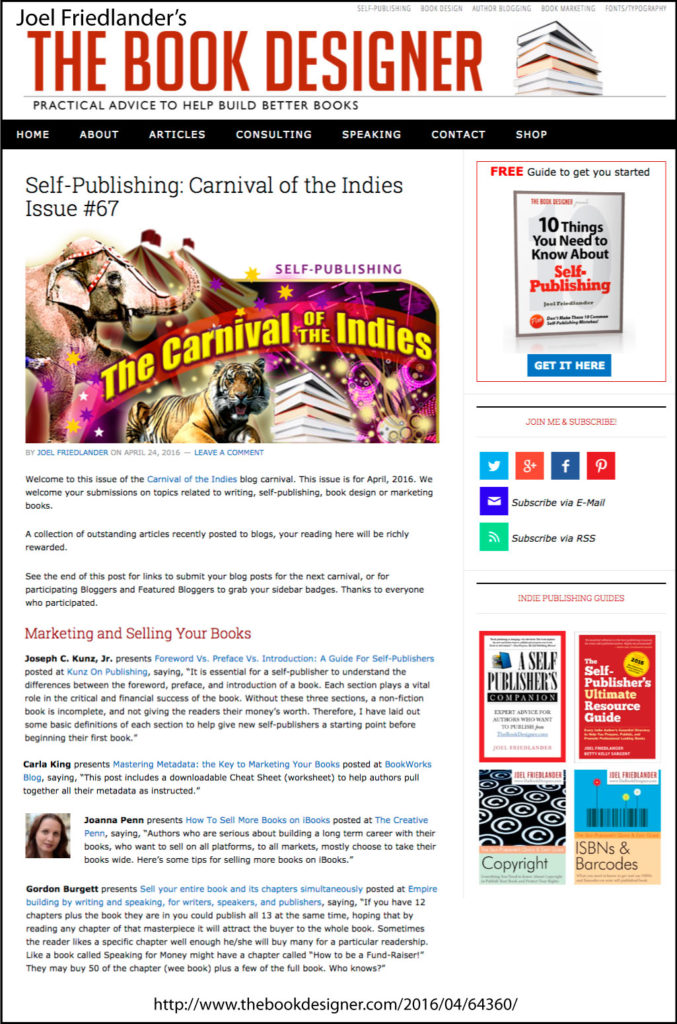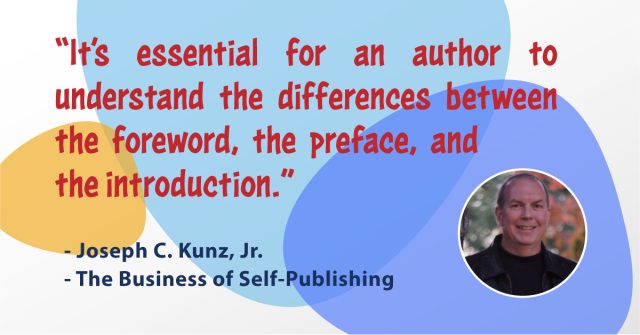Podcast: Play in new window | Download
Subscribe: Apple Podcasts | Spotify | Pandora | RSS | More
Updated December 28, 2022
Subtitle
Understanding the differences and how to use each to your advantage can help propel your book to critical and financial success
Synopsis
A foreword, preface, and introduction can each play a pivotal in a book’s marketing plan. Understanding the differences and how to use each to your advantage can help propel your book to critical and financial success.
What You Will Learn
 1. You will learn the fundamental differences between a book’s foreword, preface, and introduction.
1. You will learn the fundamental differences between a book’s foreword, preface, and introduction.
2. You will learn how these three sections can make your book more impressive than most other books.
3. You will learn how these three sections can enhance your book’s financial and critical success
Introduction
A self-publisher must understand the differences between the foreword, preface, and book introduction. Each section plays a vital role in the critical and financial success of the book. Without these three sections, a non-fiction book is incomplete and does not give the readers their money’s worth.

Therefore, I’ve laid out some basic definitions of each section to help give new self-publishers a starting point before beginning their first book:
1. The Foreword
(Why the reader should read the book)
The foreword is the place for a guest author to show the reader why they should be reading this book. The foreword of a book is a primary selling tool for the book.
If written correctly and by the appropriate person for the job, the book’s author will gain a lot of credibility in the reader’s eyes. And it is essential to remember that the book’s author shouldn’t write the foreword.
Instead, the author can use the book’s preface and introduction to say what needs to be said about the book. Forewords introduce the reader to the author and the book itself and attempt to establish credibility for both.
A foreword doesn’t generally provide the reader with extra specific information about the book’s subject. But instead, it serves as a reminder of why the reader should read the book. The foreword must make an emotional connection with the reader.

2. The Preface
(How the book came about)
The preface is a place for the book’s author to tell the reader how this book came into being and why. It should build credibility for the author AND the book.
The preface is also an essential selling tool for the book. The preface is very similar to the foreword, except that the author wrote the preface. Here the author should explain why they wrote the book and how they came to write it. The author should be showing the reader why they are worth reading.
3. The Introduction
(About the content of the book)
The introduction introduces the material in the book. Here the author can set the stage for the reader and prepare them for what is in the book.
In the introduction, the author can quickly and simply tell the reader what is to be revealed in much greater detail if they continue reading. The introduction is a way for the author to grab the reader, intensify the reader’s desire to find out more, and hopefully devour the entire book.

Conclusion
As you can see, it is imperative to understand the fundamental differences in these three book sections to produce a professional-looking and complete self-published book. Each section is different, and each performs a specific function in the book.
Therefore, to create a high-quality and well-designed book, a self-publisher will need to put a lot of thought and effort into producing these three vital sections.
Questions to Think About
1. Please discuss how one or more of these sections helped your book.
2. Has anyone received any feedback from their readers about one of these sections?


